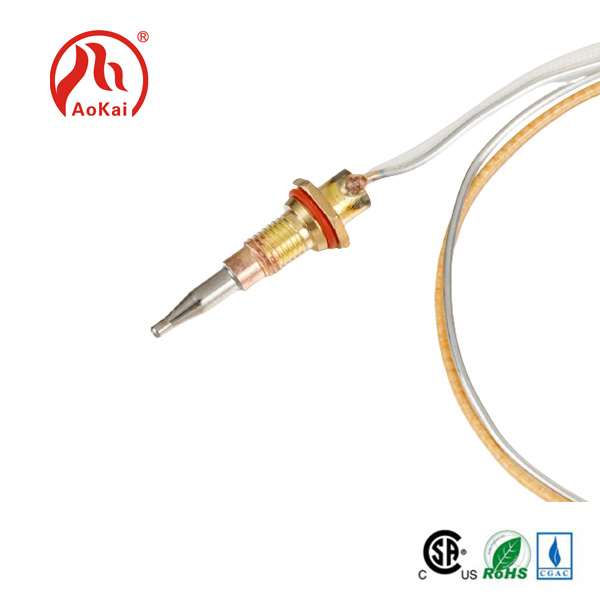Why Are Thermocouples Indispensable in Modern Temperature Measurement?
2025-08-05
In the realm of industrial instrumentation, few devices have stood the test of time like thermocouples. These compact, robust sensors have become the backbone of temperature measurement across countless industries, from steel manufacturing to aerospace engineering. But what exactly makes them so irreplaceable? This in-depth guide will explore the science behind thermocouples, their diverse applications, critical performance parameters, and address common questions—revealing why they remain the go-to choice for precise temperature monitoring in even the harshest environments.
Top News Headlines: Current Trends in Thermocouple Technology
- "High-Temp Thermocouples Redefine Metalcasting Safety Standards"
- "Miniature Thermocouples Revolutionize Medical Device Calibration"
- "Wireless Thermocouple Networks Cut Factory Downtime by 30%"
- "Thermocouple Durability Tests Validate 10-Year Service Life in Refineries"
Understanding Thermocouples: The Science Behind the Sensor
Working Principle
At their core, thermocouples operate on the Seebeck effect—a phenomenon discovered in 1821 where two dissimilar metals joined at two junctions generate a voltage proportional to the temperature difference between them. When one junction (the "hot junction") is exposed to the temperature being measured and the other (the "cold junction") remains at a known reference temperature, the resulting voltage can be converted to an accurate temperature reading.
This simple yet brilliant design eliminates the need for external power sources, making thermocouples inherently reliable in remote or hazardous locations. Unlike resistance-based sensors (RTDs), their durability in extreme conditions stems from minimal moving parts and robust construction.
Key Advantages
Thermocouples' enduring popularity stems from five critical advantages:
- Wide Temperature Range: Depending on the metal alloy, they measure from -270°C (-454°F) to 2,300°C (4,172°F)—outperforming most other sensors.
- Rapid Response: Their low thermal mass allows them to detect temperature changes in milliseconds, critical for dynamic processes like engine testing.
- Mechanical Strength: Resistant to vibration, shock, and corrosion, they thrive in industrial environments where delicate sensors fail.
- Cost-Effectiveness: Simple construction makes them affordable, even for large-scale installations like chemical plants.
- Versatility: Available in flexible wire, rigid probes, or custom forms to fit tight spaces or unique applications.
- Type K (Chromel-Alumel): The most widely used type, operating from -200°C to 1,372°C. Ideal for furnace monitoring, food processing, and automotive exhaust systems due to its balance of range and cost.
- Type J (Iron-Constantan): Performs well in reducing atmospheres (-40°C to 750°C), commonly used in oil refineries and gas turbines.
- Type T (Copper-Constantan): Excels in cryogenic applications (-270°C to 370°C), perfect for laboratory freezers and liquid nitrogen systems.
- Type R/S (Platinum-Rhodium): Designed for ultra-high temperatures (up to 1,768°C), essential in glass manufacturing and aerospace heat testing.
- Type N (Nicrosil-Nisil): Offers better oxidation resistance than Type K at high temperatures, favored in power generation plants.
Product Specifications: Premium Thermocouple Parameters
|
Parameter
|
Type K
|
Type J
|
Type T
|
Type R
|
|
Temperature Range
|
-200°C to 1,372°C
|
-40°C to 750°C
|
-270°C to 370°C
|
0°C to 1,768°C
|
|
Accuracy
|
±1.5°C or ±0.4% of reading (whichever is larger)
|
±2.2°C or ±0.75% of reading
|
±0.5°C (-40°C to 125°C); ±1.0°C (125°C to 370°C)
|
±1.0°C (0°C to 600°C); ±0.5% (600°C to 1,768°C)
|
|
Response Time (T90)
|
<1 second (exposed junction)
|
<0.5 seconds (exposed junction)
|
<0.3 seconds (exposed junction)
|
<2 seconds (sheathed)
|
|
Sheath Material
|
316 Stainless Steel
|
Inconel 600
|
304 Stainless Steel
|
Ceramic
|
|
Sheath Diameter
|
0.5mm to 8mm
|
0.5mm to 8mm
|
0.25mm to 6mm
|
3mm to 12mm
|
|
Cable Length
|
Customizable (0.5m to 50m)
|
Customizable (0.5m to 50m)
|
Customizable (0.5m to 30m)
|
Customizable (0.5m to 20m)
|
|
Connector Type
|
Miniature (SMPW), Standard (MPJ)
|
Miniature (SMPW), Standard (MPJ)
|
Miniature (SMPW)
|
High-Temp Ceramic
|
FAQ: Essential Thermocouple Questions Answered
Q: How do I calibrate a thermocouple, and how often is it needed?
A: Calibration involves comparing the thermocouple’s output to a known reference temperature (using a calibration bath or furnace). For critical applications like pharmaceutical manufacturing, calibration should occur every 6 months. In less demanding settings (e.g., HVAC), annual calibration suffices. Most industrial thermocouples maintain accuracy within specifications for 1–3 years under normal use, but harsh conditions may require more frequent checks. Always follow ISO 9001 guidelines for calibration documentation.
Q: What causes thermocouple drift, and how can it be prevented?
A: Drift—gradual loss of accuracy—results from three main factors: 1) Metallurgical changes in the thermocouple wires due to prolonged exposure to high temperatures; 2) Contamination from gases or liquids reacting with the junction; 3) Mechanical stress from vibration or thermal cycling. Prevention measures include: selecting the correct thermocouple type for the temperature range, using protective sheaths in corrosive environments, securing cables to minimize movement, and replacing sensors before their expected service life expires (typically 80% of rated lifespan for critical processes).




